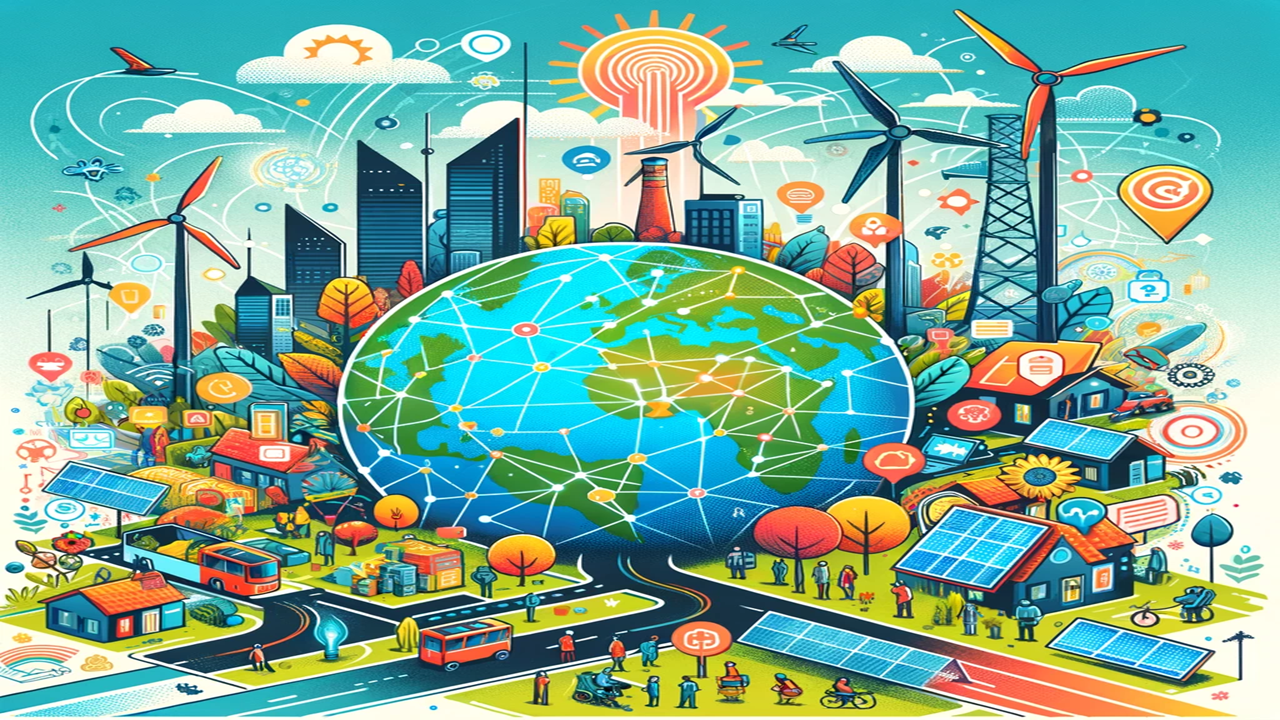Bridging the Digital Divide: Harnessing Technology for Climate Action
The World Bank's "Green Digital Transformation" report emphasizes the critical role of digital technologies in addressing climate change while closing the digital divide. It outlines the current state of digital infrastructure, the potential for reducing emissions through digital solutions, and the necessary policy recommendations to achieve a green digital transformation.

As the world grapples with the dual challenges of climate change and digital inequality, the World Bank's latest report, "Green Digital Transformation: How to Sustainably Close the Digital Divide and Harness Digital Tools for Climate Action," provides a comprehensive analysis of how digital tools can be leveraged for climate action. This report not only highlights the urgency of addressing digital disparities but also underscores the potential of digital technologies in reducing greenhouse gas emissions and enhancing climate resilience.
The Digital Divide and Climate Action
Nearly 3 billion people remain digitally unconnected, with the majority residing in low- and middle-income countries (LMICs). Closing this digital divide is essential for inclusive development and for leveraging digital technologies to combat climate change. The World Bank's report emphasizes that investing in inclusive digitalization can significantly accelerate climate action. Digital technologies can help reduce greenhouse gas (GHG) emissions in key sectors such as energy, transportation, and materials.
Digital-Climate Policy Nexus
Governments' commitments to the Paris Agreement on climate change are encapsulated in their Nationally Determined Contributions (NDCs). Many LMICs are now incorporating digital technologies into their climate action plans. For instance, Rwanda and Maldives have integrated digital technologies into both mitigation and adaptation strategies. Rwanda plans to use a national spatial data infrastructure to manage land information resources and identify climate vulnerabilities. Similarly, Maldives emphasizes the role of technology in early warning systems and systematic observation.
Decarbonizing the Digital Sector
The digital sector is both a contributor to and a potential mitigator of climate change. The ICT sector's global carbon dioxide (CO2) emissions range from 1.5 to 4 percent, comparable to the footprints of commercial aviation or maritime transportation. Data centers, digital devices, and telecom networks are major sources of emissions. The report calls for greater investments in energy-efficient technology and renewable energy to reduce the digital sector's carbon footprint.
Making the Digital Sector More Resilient
Digital infrastructure is increasingly vulnerable to climate risks such as floods, landslides, and extreme weather events. Disruptions to digital infrastructure can have significant economic consequences. The report stresses the importance of climate-proofing digital infrastructure to ensure resilience and continuity of critical services.
Digital Technologies for Mitigation
Digital technologies offer new opportunities to reduce emissions across various sectors. In the energy sector, digital solutions can support the transition to renewable energy and enhance energy efficiency. In transportation, digital technologies can optimize traffic flows and promote electric vehicles. In the agrifood system, they can improve food production and reduce waste. In urban centers, digital tools can enhance urban planning and waste management.
Digital Technologies for Resilience
Digital technologies also play a crucial role in building resilience to climate change. They can enhance disaster preparedness, provide early warning systems, and support post-disaster recovery through digital identification and financial services. Investments in connectivity, digital skills, and data infrastructure are essential to maximize the benefits of digital technologies for resilience.
Policy Recommendations
The report outlines several key principles for green digitalization strategies:
- Complete a risk and emissions profile: Each country should determine its green digitalization priorities based on its climate risk profile and carbon footprint.
- Decouple digitalization from emissions: Policies should promote energy-efficient technology, renewable energy use, and sustainable practices across the digital value chain.
- Ensure resilience of critical digital infrastructure: Governments should incentivize resilient technology choices and ensure climate risks are considered in infrastructure design.
- Calculate costs and benefits in a local context: Cost-effective green technology choices should be weighed against other development priorities.
- Leverage position in the value chain: Countries with significant digital manufacturing or data center operations should set and apply enhanced standards.
- Break policy silos: Whole-of-government approaches are needed to integrate digital and climate policies.
- Engage multiple stakeholders: Private companies play a key role in green digitalization and should be encouraged to adopt renewable energy and sustainable practices.
- Apply agile regulation principles: Governments should create a responsive enabling environment for green digitalization through regulatory sandboxes and innovation test beds.
Conclusion
The World Bank's "Green Digital Transformation" report provides a comprehensive roadmap for leveraging digital technologies to combat climate change while closing the digital divide. By integrating digital and climate strategies, countries can achieve sustainable and inclusive growth, ensuring that digital advancements contribute positively to global climate goals.
ALSO READ
Schneider Electric Chennai Plant Receives Golden Peacock Award for Energy Efficiency
India's Renewable Energy Vision: Insights from Ratul Puri
Suzuki Reveals Decade-Long Technology Strategy for Energy Efficiency
Tata Power to Invest Rs 20,000 Crore in FY25 with Focus on Renewable Energy
La Banque Postale and EIB Renew Partnership for Renewable Energy and Sustainable Mobility










